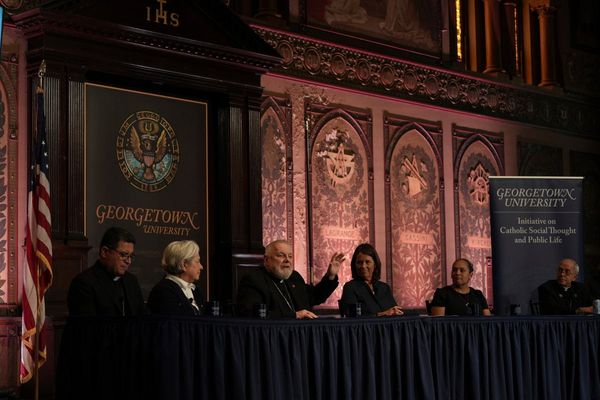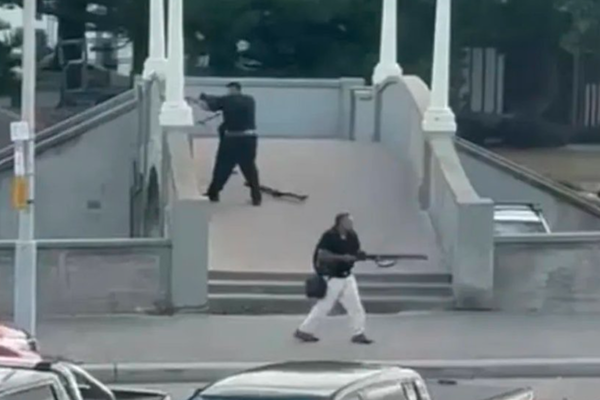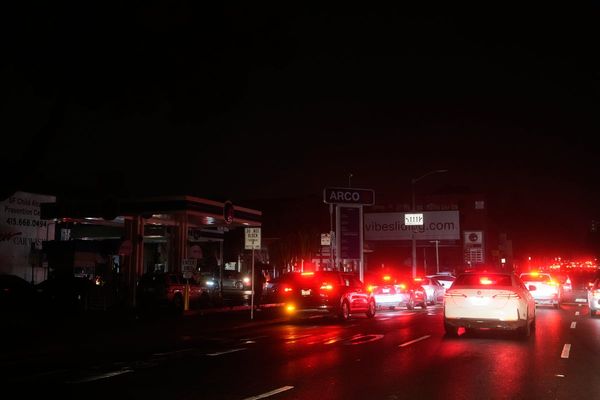
Managing but not governing. In charge but not in power. Deciding but not leading.
That was the prime minister on display at Friday’s National Press Club address — unveiling another managerial tweak to the economy, denouncing his opponent, and promising voters more of the same that they’ve been given over the past two-and-a-half years.
Business as usual isn’t going to cut it. The drift in Labor’s support has been happening for 18 months, to the point where it’s impossible to see the government retaining its majority. But there are weeks, and likely months, until the election. Don’t think that drift can’t continue to the point where a Dutton government, even a majority government, becomes odds-on.
Peter Dutton leads a pack of duds, and his policies — where he has them — are an embarrassing confection of innumeracy and MAGA Down Under cut-and-pastes. Labor should be setting itself up for an extended period in government. Instead, Anthony Albanese is quietly leading it to defeat.
Last week’s address — normally meant to signal the start of the political year but which was just another stage in the unofficial election campaign — offered nothing to voters but the same managerial mediocrity; a continuation of Labor’s approach to government of playing handmaiden to a dysfunctional economic system that has delivered Australians inflation and interest rate hikes.
In particular, Albanese persists with his protectionist Future Made In Australia fantasy, a multibillion-dollar answer in search of a problem. “Manufacturing workers turning resources the world needs into products the world wants, through our plan for a Future Made in Australia,” he proudly boasted. Except, which workers? Australia has record high participation and unemployment at 4%, despite the Reserve Bank’s efforts to trash the economy.
The centrepiece, to use the word charitably, of Albanese’s speech was the commitment of billions to attract more trades apprentices, something that for nearly a year — as trades, particularly building apprentice, numbers declined — the building industry has been crying out for. Problem is, luring more workers into trades apprenticeships (because Labor is terrified it is not going to come within cooee of its housing target due to workforce shortages) only shifts the shortage elsewhere. The main reason apprentices don’t complete their training is “got offered a better job” or “changed career”.
Labor has rightly lifted remuneration for aged care workers and childcare workers because of the compelling policy reasons to ensure those sectors stop haemorrhaging workers. But Future Made In Australia is subsidising an expansion of the manufacturing workforce while the government is also subsidising the construction workforce (not to mention trying to get more people to join the ADF, more people to help build nuclear submarines, increasing the NDIS workforce, and hiring more public servants to replace more expensive consultants).
Worse, Future Made In Australia isn’t even a political winner — it seems unlikely to shift a single vote. Voters don’t know about it or, more likely, don’t care. The government’s support has reliably declined even as it has spruiked its vision of a manufacturing utopia.
Ask Joe Biden and the Democrats whether propping up manufacturing will bring blue-collar voters flocking to your standard — and Australia has never had the problem of deindustrialised communities to the same scale as the United States. Voters aren’t interested in the composition of the workforce, or what proportion of the economy manufacturing makes up. They want to know when energy and grocery prices are going to fall, when the corporations that have gouged them and ripped them off will get their comeuppance, and when the economy will start delivering for them rather than for investors, executives and the rich.
Albanese’s government has got most of the big calls right. It delivered the first budget surpluses in a couple of political generations while lowering inflation and maintaining low unemployment. It has tilted the industrial relations playing field away from precarity and exploitation of workers and delivered critical investment to health and care industries. It has displayed an understanding that the biggest problem in the economy is market concentration and the damage that inflicts on inflation, productivity and wages. Yet it has been almost entirely resistant to intervening to address that, preferring instead to abide by a set of economic rules inherited from the neoliberal era.
No-one else is playing by the rules. Dutton has jettisoned any number of Liberal traditions and plans a massive increase in the size of government and the break-up of retail oligopolists. Labor denounces Dutton as nasty and divisive, but it has fallen into the same trap as it did with Tony Abbott; obsessing about him and thinking if it can just find the right attack line, voters will realise how awful he is and flock back to them.
But voters already think he’s nasty and divisive. In growing numbers, they’re happy to vote for him anyway. A smart government sets up the battlefield and surprises its opponents with its attacks, rather than worrying about what the enemy is doing. The last time Albanese did that was the overhaul of the stage three tax cuts a year ago, which left Dutton and his crew badly exposed.
It hasn’t achieved that since. Instead, Albanese has boxed himself in, for reasons that only he and his inner circle can ever know. If he continues in the vein of last Friday, he’ll deliver a Dutton government.
Have something to say about this article? Write to us at letters@crikey.com.au. Please include your full name to be considered for publication in Crikey’s Your Say. We reserve the right to edit for length and clarity.









